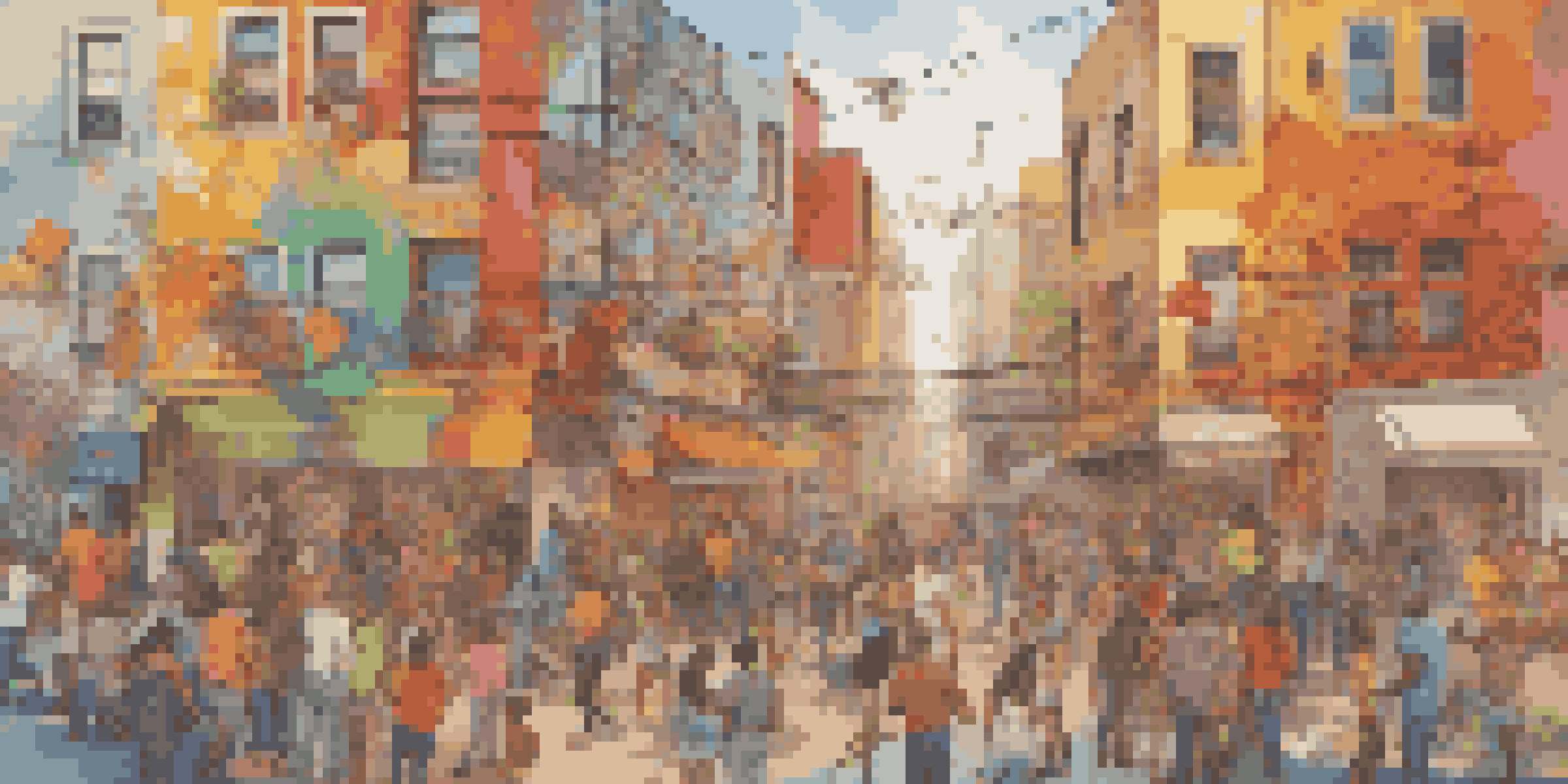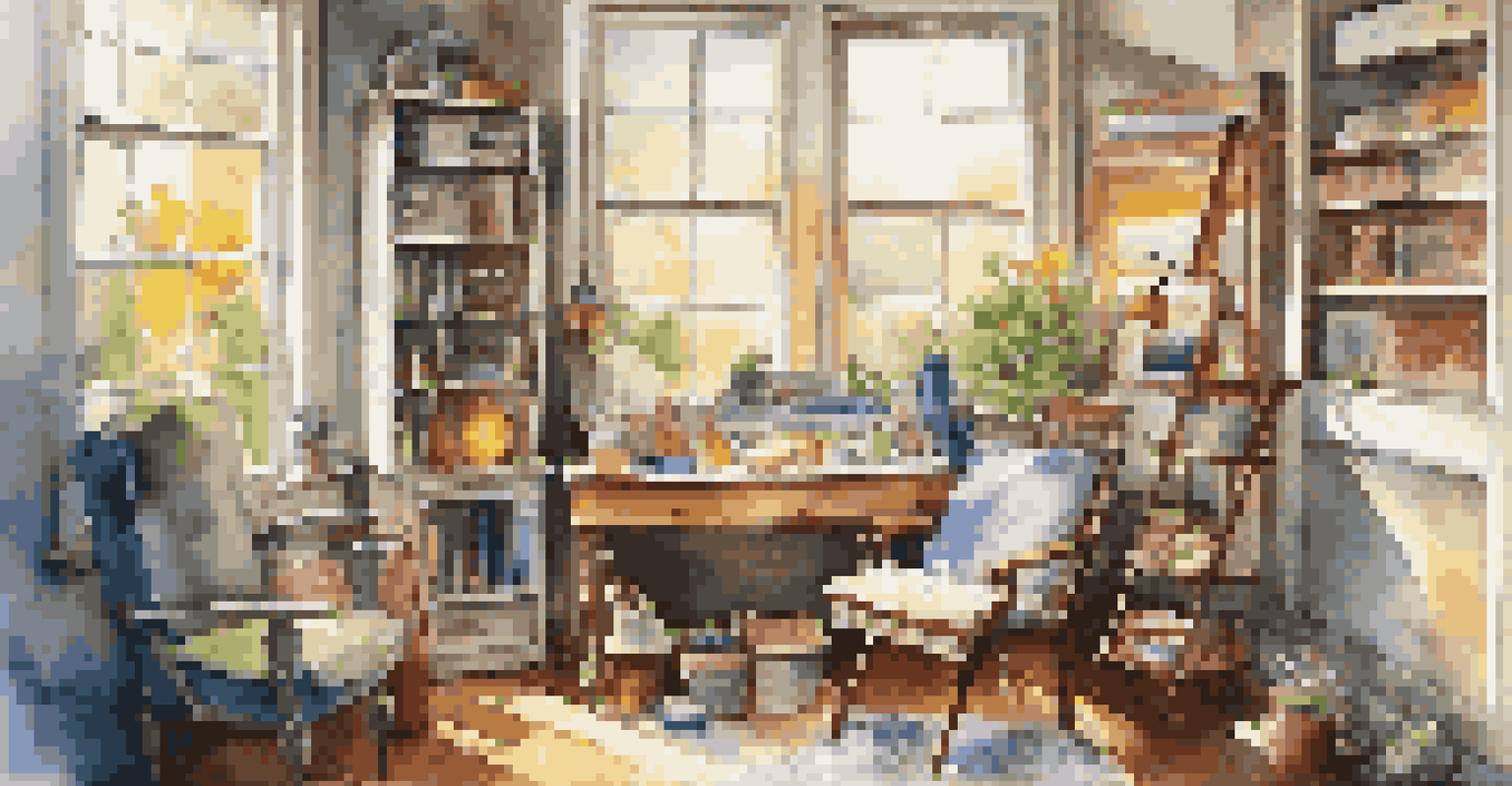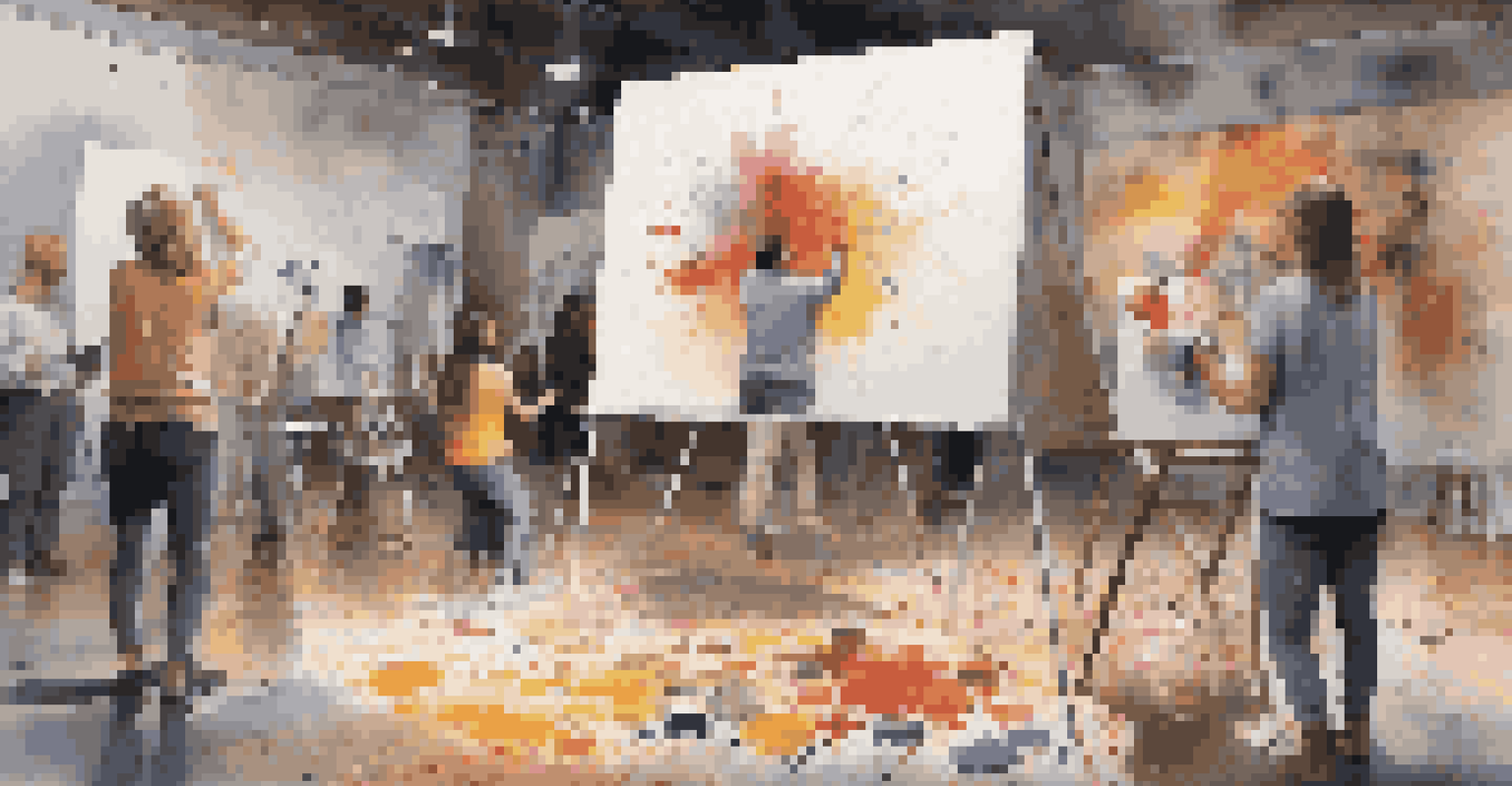The Role of Social Media in Art Accessibility

Understanding Art Accessibility in the Digital Age
Art accessibility means making art available to everyone, regardless of location or ability. In today's world, social media plays a crucial role in achieving this goal. Platforms like Instagram and Pinterest allow artists to showcase their work to a global audience, breaking down geographical barriers.
Art enables us to find ourselves and lose ourselves at the same time.
By democratizing access to art, social media enables diverse voices and perspectives to shine. This is particularly important for marginalized artists, who might struggle to find traditional venues for their work. In essence, social media acts as a virtual gallery that anyone can visit.
Moreover, the interactive nature of these platforms allows for engagement and dialogue around art. Users can comment, share, and discuss pieces, fostering a community that values creativity and inclusivity. Thus, social media is not just a showcase; it’s a vibrant space for connection.
The Power of Visual Storytelling on Social Platforms
Visual storytelling is a potent tool that artists leverage on social media. With platforms designed for image and video sharing, artists can narrate their creative journeys while showcasing their work. This adds depth to the art, allowing viewers to connect on a personal level.

For example, an artist may share a time-lapse video of their painting process on TikTok, inviting followers into their world. This not only highlights the finished piece but also demystifies the creation process, making art more relatable. As a result, followers feel a sense of investment in the artist's journey.
Social Media Enhances Art Access
Platforms like Instagram and Pinterest break down geographic barriers, allowing artists to share their work with a global audience.
Furthermore, storytelling enhances accessibility by providing context that might be missing in a traditional gallery setting. Viewers can learn about the inspirations behind the art, making it more meaningful. This deeper understanding encourages appreciation and engagement with art in ways traditional methods may not.
Breaking Geographic Barriers with Online Exhibitions
In the past, art lovers often had to travel to galleries or museums to experience art. However, social media has transformed this landscape by facilitating online exhibitions. Artists can now host virtual showings, allowing anyone with internet access to enjoy and explore their work from home.
The art of communication is the language of leadership.
These online exhibitions often reach a far broader audience than physical spaces can accommodate. For instance, a small gallery in a remote town can suddenly attract viewers from around the world thanks to a well-promoted Instagram campaign. This global reach fosters a more diverse appreciation of art.
Additionally, online exhibitions can be more inclusive for individuals with disabilities. Those who may find it challenging to navigate physical spaces can engage with art from the comfort of their own homes. This shift emphasizes the importance of accessibility in the art world, ensuring that everyone has the opportunity to appreciate creativity.
Engaging Diverse Audiences Through Interactive Content
Social media thrives on interaction, and this quality is invaluable for engaging diverse audiences with art. Platforms like Instagram and Facebook allow artists to create polls, Q&A sessions, and live streams, inviting viewers to participate actively. This two-way communication fosters a sense of community and belonging.
For example, an artist might host a live painting session on Instagram, allowing followers to ask questions and offer suggestions in real time. This interaction not only enhances viewer engagement but also makes art feel more accessible and less intimidating. It breaks down the barriers between the artist and the audience.
Interactive Content Builds Community
Engaging features like live streams and Q&A sessions foster a sense of belonging and make art feel more accessible.
Moreover, such interactive content can spark interest in art among those who might not typically engage with it. By inviting participation, artists create a welcoming space where everyone feels valued. This inclusivity can help to cultivate a new generation of art enthusiasts.
Fostering Community and Collaboration Among Artists
Social media has become a hub for artists to connect and collaborate. Platforms like Twitter and LinkedIn allow creatives to network, share resources, and support one another. This sense of community is essential for fostering growth and innovation in the art world.
Collaboration can take many forms, from joint exhibitions to co-creating pieces. For instance, two artists might decide to create a mural together, sharing their process on social media. This not only enriches their work but also creates a buzz that can attract more followers and potential buyers.
Additionally, community-driven initiatives often arise from these connections. Artists may band together to raise awareness for social causes, using their platforms to amplify important messages. This collaborative spirit not only strengthens the art community but also paves the way for broader social change.
The Role of Hashtags in Art Discovery
Hashtags are more than just trendy phrases; they are powerful tools for art discovery on social media. By using specific hashtags, artists can increase the visibility of their work, making it easier for potential fans to find them. This practice democratizes exposure, allowing emerging artists to compete with established names.
For instance, an artist might use hashtags like #ArtForAll or #EmergingArtists to reach audiences interested in supporting new talent. This targeted approach can significantly enhance their chances of being seen by curators, collectors, and art enthusiasts. The right hashtags can indeed open doors that were previously closed.
Hashtags Boost Art Discovery
Using targeted hashtags allows emerging artists to enhance their visibility and connect with potential fans and collectors.
Moreover, hashtags can help curate conversations around specific themes or movements within the art community. This facilitates dialogue and builds a sense of belonging. By following these hashtags, users can explore a wide array of artistic expressions, making art more accessible and engaging.
Challenges of Art Accessibility on Social Media
While social media offers numerous benefits for art accessibility, it also presents challenges. One major issue is the overwhelming amount of content available, which can make it difficult for individual artists to stand out. The sheer volume of posts can lead to valuable work being overlooked.
Additionally, the algorithms used by social media platforms can sometimes hinder visibility. Artists may find that their posts don't reach their intended audience due to changing algorithms that prioritize certain types of content. This unpredictability can be frustrating for creators trying to share their work.

Lastly, the digital divide remains a significant barrier. Not everyone has equal access to the internet or technology, which can limit the reach of artists, particularly in underserved communities. Addressing these challenges is crucial to ensuring that art remains accessible to all.